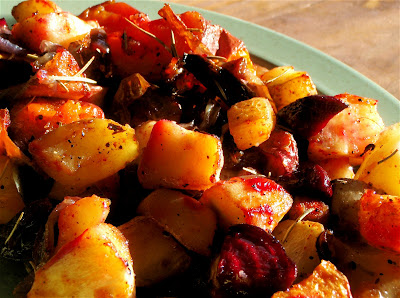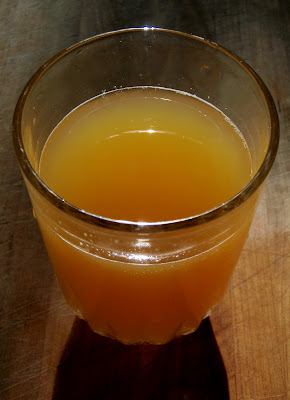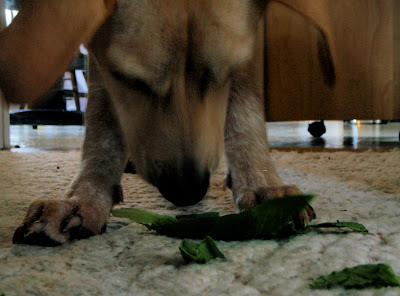
The Times Op Ed section didn't want this piece, so now it's yours:
I was surprised to read this sentence in a recent NYT article on persimmons:
"Their mild, undistinctive flavor, vaguely reminiscent of pumpkin, means that it is hard to find a leading role for them."
While I'm a regular reader of the author, the enlightening Harold McGee, I do find his perspective on persimmons somewhat lacking. My most obvious objection is that I think persimmons do have a distinctive flavor, and thereby occupy a valuable niche in supermarkets that might otherwise carry only mealy, tasteless, red "delicious" apples and pithy oranges.
The sweet, musky taste of a persimmon is unusual and complex, and the gooey texture unique amongst the miniscule variety of fruits commonly available in the U.S. A supermarket persimmon is often the best fruit in the supermarket.
When ripe, persimmons are wonderful to eat raw, and require no adulteration, even to serve a "leading role." If you have your own tree and are simply up to your ears in the fruit, then make a pudding, and consider your position extremely enviable. If not, I suggest you enjoy them au naturel.
Besides the issue of taste, what concerns me most about the article is its failure to mention the indigenous American persimmon. While the author does describe the commonly available persimmon as an "Asian species," there is no reference to the native species which can be found growing even in Manhattan.
Of course it isn't possible to include every last detail in a piece subject to a deadline, set length, and the whims of an editor, but the article's failure to mention the persimmons growing right under our noses is indicative of a larger disturbing trend: our society's ignorance of its native foods.
We Americans have a serious handicap when it comes to utilizing our indigenous, edible flora. When Europeans arrived on this continent, they encountered a wealth of delicious biodiversity never before experienced in their homelands. Some items, like chocolate, tomatoes, and turkey, became all the rage.
Others, like persimmons, were generally disregarded as soon as settlers had grown enough of the stuff they'd brought from home. As a result, the plants that had fed indigenous populations for thousands of years were plowed under to make room for cauliflower.
Thankfully, Americans are finally grasping gastronomic concepts such as terroir and the emphasis of simple preparation to showcase the quality of a well grown ingredient. As a result we can begin to see how foolish it was to replace plants that had evolved perfectly to survive on this soil with those which often require genetic alteration, pesticide, chemical fertilizer, and the razing of native habitats. When you eat such a food, you can taste that it belongs here.
On my way back to Boston from a Thanksgiving road trip to Missouri, I traveled with a disposable baking tray full of the fruit in question. I had gathered these outside of St. Louis, and happily handed them out to wild persimmon virgins along the way. Everyone who ate one was converted, their eyes crossing in pleasure, and there was nary a pudding in sight.
I have no doubt that, given the opportunity, McGee would have the same reaction.




















































